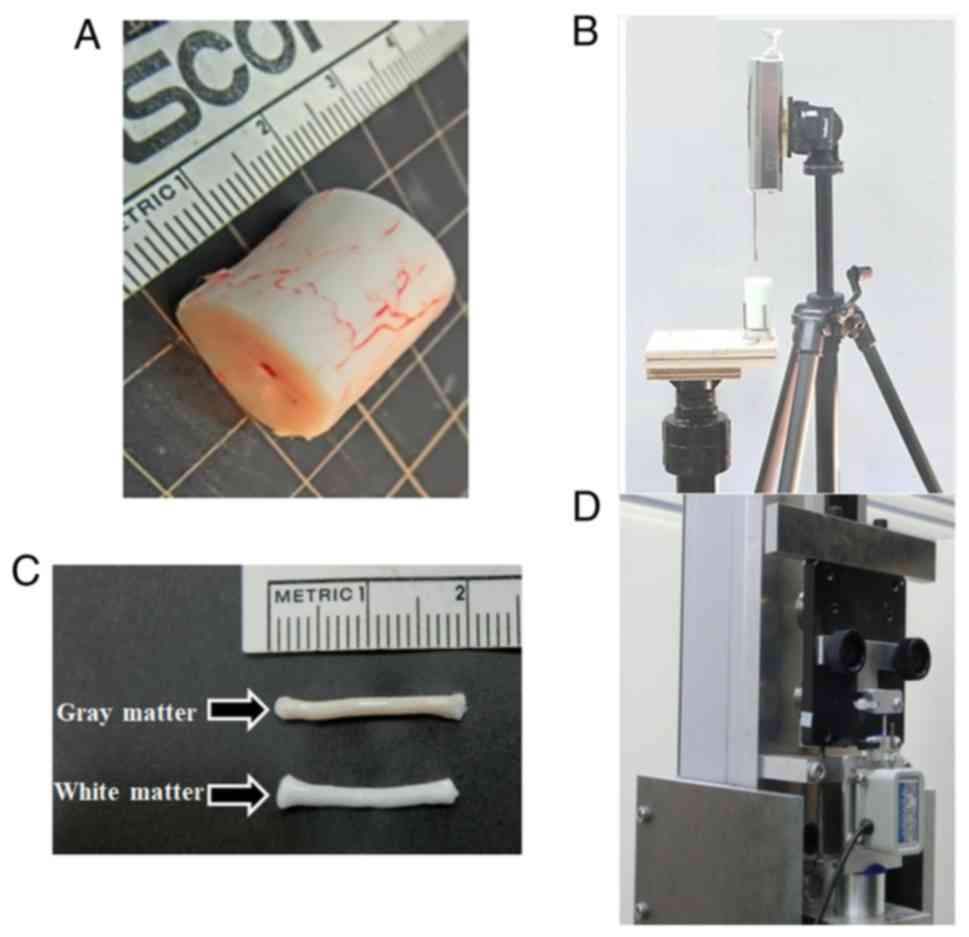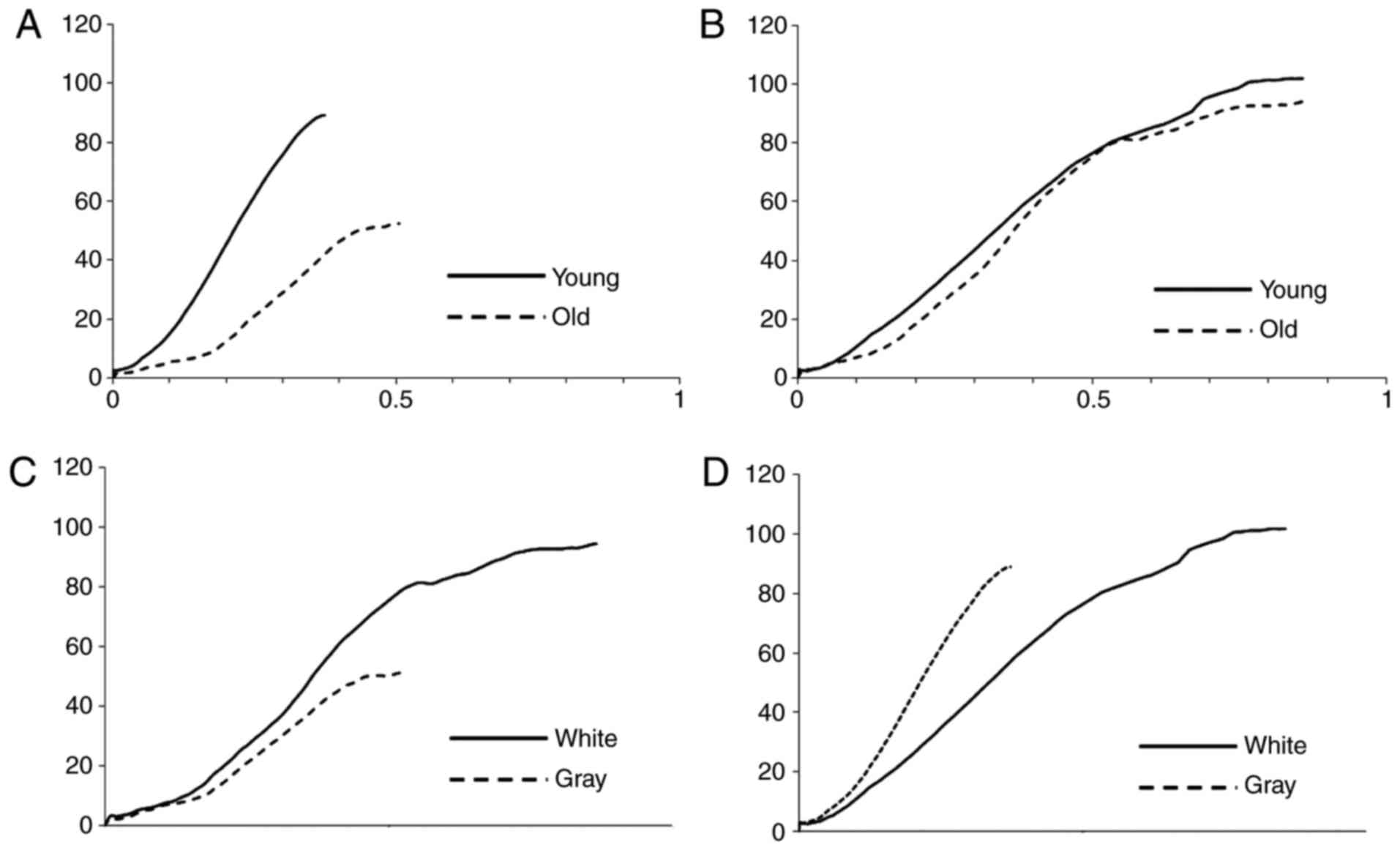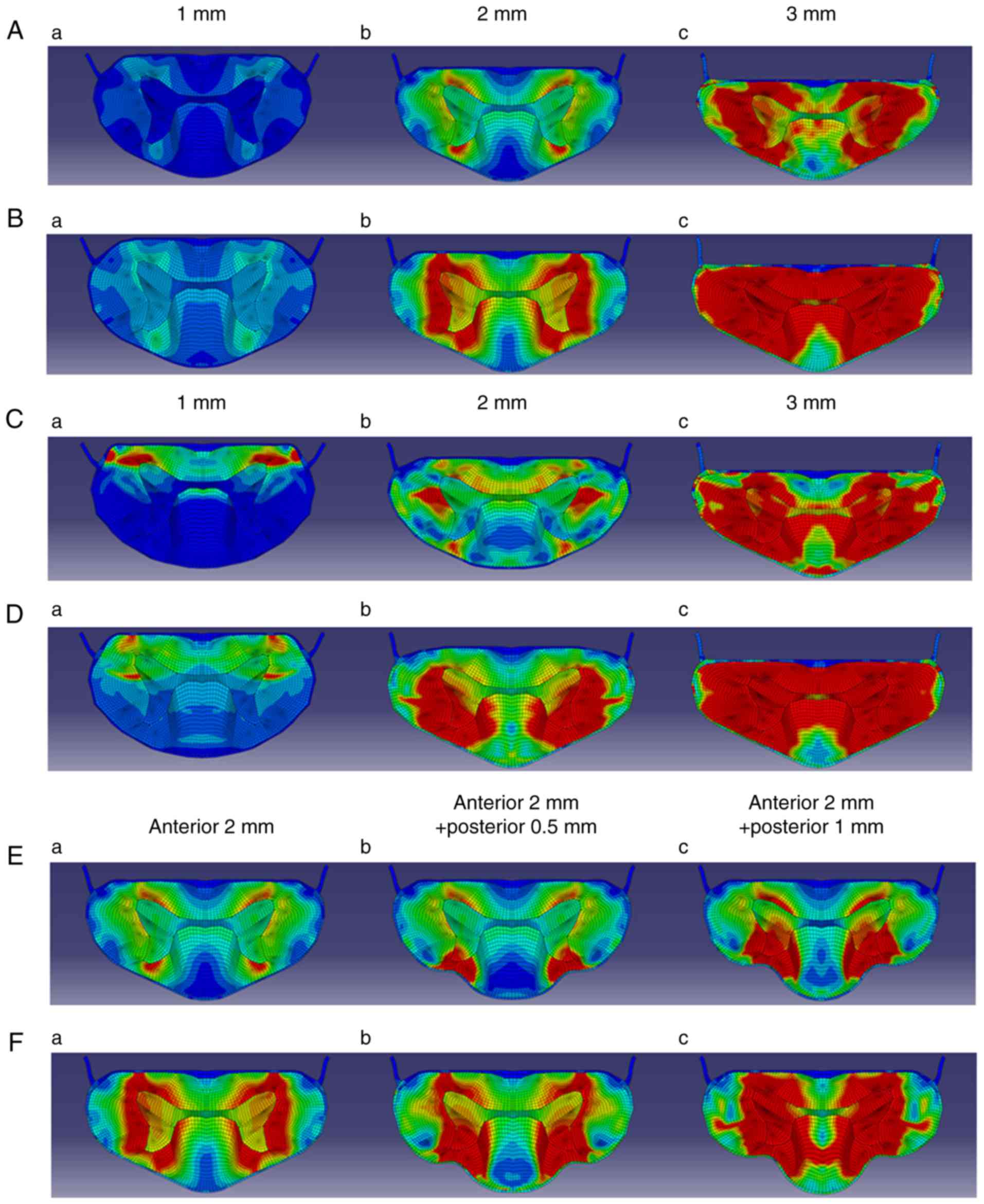|
1
|
Nurick S: The natural history and the
results of surgical treatment of the spinal cord disorder
associated with cervical spondylosis. Brain. 95:101–108. 1972.
View Article : Google Scholar : PubMed/NCBI
|
|
2
|
Ichihara K, Taguchi T, Shimada Y,
Sakuramoto I, Kawano S and Kawai S: Gray matter of the bovine
cervical spinal cord was mechanically more rigid and fragile than
the white matter. J Neurotrauma. 18:361–367. 2001. View Article : Google Scholar : PubMed/NCBI
|
|
3
|
Clarke E and Robinson PK: Cervical
myelopathy: A complication of cervical spondylosis. Brain.
79:485–510. 1956. View Article : Google Scholar
|
|
4
|
Lees F and Turner JW: Natural history and
prognosis of cervical spondylosis. Br Med J. 2:1607–1610. 1963.
View Article : Google Scholar : PubMed/NCBI
|
|
5
|
Li XF and Dai LY: Acute central cord
syndrome: Injury mechanisms and stress features. Spine (Phila Pa
1976). 35:E955–E964. 2010. View Article : Google Scholar : PubMed/NCBI
|
|
6
|
Ichihara K, Taguchi T, Sakuramoto I,
Kawano S and Kawai S: Mechanism of the spinal cord injury and the
cervical spondylotic myelopathy: New approach based on the
mechanical features of the white and gray matter of the spinal
cord. J Neurosurg. 99 3 Suppl:S278–S285. 2003.
|
|
7
|
Lebl DR, Hughes A, Cammisa FP Jr and
O'Leary PF: Cervical spondylotic myelopathy: Pathophysiology,
clinical presentation, and treatment. HSS J. 7:170–178. 2011.
View Article : Google Scholar : PubMed/NCBI
|
|
8
|
Kaneoka K, Ono K, Inami S and Hayashi K:
Motion analysis of cervical vertebrae during whiplash loading.
Spine. 24:763–770. 1999. View Article : Google Scholar : PubMed/NCBI
|
|
9
|
Fujiwara K, Yonenobu K, Hiroshima K, Ebara
S, Yamashita K and Ono K: Morphometry of the cervical spinal cord
and its relation to pathology in cases with compression myelopathy.
Spine. 13:1212–1216. 1998. View Article : Google Scholar
|
|
10
|
Galbraith JA, Thibault LE and Matteson DR:
Mechanical and electrical responses of the squid giant axon to
simple elongation. J Biomech Eng. 115:13–22. 1993. View Article : Google Scholar : PubMed/NCBI
|
|
11
|
Kato Y, Kataoka H, Ichihara K, Imajo Y,
Kojima T, Kawano S, Hamanaka D, Yaji K and Taguchi T: Biomechanical
study of cervical flexion myelopathy using a three-dimensional
finite element method. J Neurosurg Spine. 8:436–441. 2008.
View Article : Google Scholar : PubMed/NCBI
|
|
12
|
Kato Y, Kanchiku T, Imajo Y, Kimura K,
Ichihara K, Kawano S, Hamanaka D, Yaji K and Taguchi T:
Biomechanical study of the effect of degree of static compression
of the spinal cord in ossification of the posterior longitudinal
ligament. J Neurosurg Spine. 12:301–305. 2010. View Article : Google Scholar : PubMed/NCBI
|
|
13
|
Nishida N, Kato Y, Imajo Y, Kawano S and
Taguchi T: Biomechanical analysis of cervical spondylotic
myelopathy: The influence of dynamic factors and morphometry of the
spinal cord. J Spinal Cord Med. 35:256–261. 2012. View Article : Google Scholar : PubMed/NCBI
|
|
14
|
Nishida N, Kanchiku T, Kato Y, Imajo Y,
Yoshida Y, Kawano S and Taguchi T: Biomechanical analysis of
cervical myelopathy due to ossification of the posterior
longitudinal ligament: Effects of posterior decompression and
kyphosis following decompression. Exp Ther Med. 7:1095–1099. 2014.
View Article : Google Scholar : PubMed/NCBI
|
|
15
|
Nishida N, Kanchiku T, Imajo Y, Suzuki H,
Yoshida Y, Kato Y, Nakajima D and Taguchi T: Stress analysis of the
cervical spinal cord: Impact of the morphology of spinal cord
segments on stress. J Spinal Cord Med. 39:327–334. 2016.PubMed/NCBI
|
|
16
|
Nishida N, Kanchiku T, Kato Y, Imajo Y,
Yoshida Y, Kawano S and Taguchi T: Cervical ossification of the
posterior longitudinal ligament: Factors affecting the effect of
posterior decompression. J Spinal Cord Med. 40:93–99. 2017.
View Article : Google Scholar : PubMed/NCBI
|
|
17
|
Suri A, Chabbra RP, Mehta VS, Gaikwad S
and Pandey RM: Effect of intramedullary signal changes on the
surgical outcome of patients with cervical spondylotic myelopathy.
Spine J. 3:33–45. 2003. View Article : Google Scholar : PubMed/NCBI
|
|
18
|
Chagas H, Dominques F, Aversa A, Vidal
Fonseca AL and de Souza JM: Cervical spondylotic myelopathy: 10
years of prospective outcome analysis of anterior decompression and
fusion. Surg Neurol. 64 Suppl 1:S30–S36. 2005. View Article : Google Scholar
|
|
19
|
Nagashima H, Morio Y, Yamashita H, Yamane
K and Teshima R: Clinical features and surgical outcomes of
cervical myelopathy in the elderly. Clin Orthop Relat Res.
444:140–145. 2006. View Article : Google Scholar : PubMed/NCBI
|
|
20
|
Kameyama T, Hashizume Y, Ando T, Takahashi
A, Yanagi T and Mizuno J: Spinal cord morphology and pathology in
ossification of the posterior longitudinal ligament. Brain.
118:263–278. 1995. View Article : Google Scholar : PubMed/NCBI
|
|
21
|
Nishida N, Kato Y, Imajo Y, Kawano S and
Taguchi T: Biomechanical analysis of cervical spondylotic
myelopathy: The influence of dynamic factors and morphometry of the
spinal cord. J Spinal Cord Med. 35:256–261. 2012. View Article : Google Scholar : PubMed/NCBI
|













